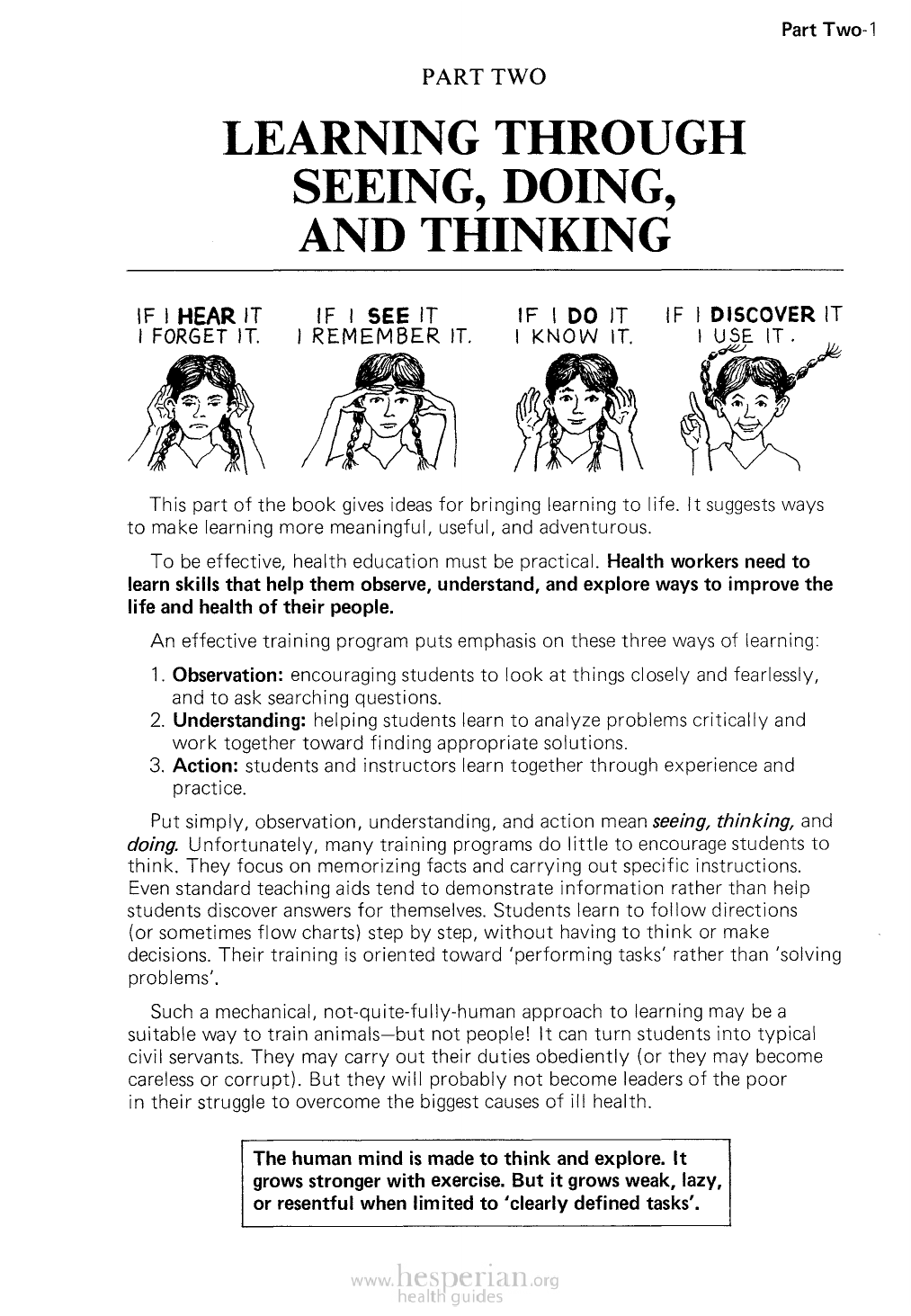
PART TWO
LEARNING THROUGH
SEEING, DOING,
AND THINKING
Part Two-i
This part of the book gives ideas for bringing learning to life. It suggests ways to
make learning more meaningful, useful, and adventurous.
To be effective, health education must be practical. Health workers need to learn
skills that help them observe, understand, and explore ways to improve the
life and health of their people.
An effective training program puts emphasis on these three ways of learning:
1. Observation: encouraging students to look at things closely and fearlessly,
and to ask searching questions.
2. Understanding: helping students learn to analyze problems critically and work
together toward finding appropriate solutions.
3. Action: students and instructors learn together through experience and
practice.
Put simply, observation, understanding, and action mean seeing, thinking, and
doing. Unfortunately, many training programs do little to encourage students to
think. They focus on memorizing facts and carrying out specific instructions. Even
standard teaching aids tend to demonstrate information rather than help students
discover answers for themselves. Students learn to follow directions {or sometimes
flow charts) step by step, without having to think or make decisions. Their training is
oriented toward ‘performing tasks’ rather than ‘solving problems’.
Such a mechanical, not-quite-fully-human approach to learning may be a suitable
way to train animals—but not people! It can turn students into typical civil servants.
They may carry out their duties obediently (or they may become careless or corrupt).
But they will probably not become leaders of the poor in their struggle to overcome
the biggest causes of ill health.
The human mind is made to think and explore. It
grows stronger with exercise. But it grows weak, lazy,
or resentful when limited to ‘clearly defined tasks’.